Windows Defending Center
Posted: March 28, 2012
Threat Metric
The following fields listed on the Threat Meter containing a specific value, are explained in detail below:
Threat Level: The threat level scale goes from 1 to 10 where 10 is the highest level of severity and 1 is the lowest level of severity. Each specific level is relative to the threat's consistent assessed behaviors collected from SpyHunter's risk assessment model.
Detection Count: The collective number of confirmed and suspected cases of a particular malware threat. The detection count is calculated from infected PCs retrieved from diagnostic and scan log reports generated by SpyHunter.
Volume Count: Similar to the detection count, the Volume Count is specifically based on the number of confirmed and suspected threats infecting systems on a daily basis. High volume counts usually represent a popular threat but may or may not have infected a large number of systems. High detection count threats could lay dormant and have a low volume count. Criteria for Volume Count is relative to a daily detection count.
Trend Path: The Trend Path, utilizing an up arrow, down arrow or equal symbol, represents the level of recent movement of a particular threat. Up arrows represent an increase, down arrows represent a decline and the equal symbol represent no change to a threat's recent movement.
% Impact (Last 7 Days): This demonstrates a 7-day period change in the frequency of a malware threat infecting PCs. The percentage impact correlates directly to the current Trend Path to determine a rise or decline in the percentage.
| Threat Level: | 10/10 |
|---|---|
| Infected PCs: | 16 |
| First Seen: | March 28, 2012 |
|---|---|
| Last Seen: | May 6, 2024 |
| OS(es) Affected: | Windows |
 Being a new version of Win32/FakeVimes isn't easy, as Windows Defending Center not only has to convince you that Windows Defending Center is unrelated to other types of scamware that Windows Defending Center is identical to in appearance, but must also scam you out of your money before you figure out that its alerts, system scans and other security pretenses are all fake. Like any other rogue anti-virus scanner, Windows Defending Center should be considered a threat to your PC that's unable to help with security, even though Windows Defending Center acts as though Windows Defending Center has security features for a wide array of scenarios. SpywareRemove.com malware researchers suggest that if you must spend money on anything to remove Windows Defending Center, it should be on a trustworthy brand of anti-malware software, since manual removal of Windows Defending Center is both tedious and may risk harming your computer if it's done inexpertly.
Being a new version of Win32/FakeVimes isn't easy, as Windows Defending Center not only has to convince you that Windows Defending Center is unrelated to other types of scamware that Windows Defending Center is identical to in appearance, but must also scam you out of your money before you figure out that its alerts, system scans and other security pretenses are all fake. Like any other rogue anti-virus scanner, Windows Defending Center should be considered a threat to your PC that's unable to help with security, even though Windows Defending Center acts as though Windows Defending Center has security features for a wide array of scenarios. SpywareRemove.com malware researchers suggest that if you must spend money on anything to remove Windows Defending Center, it should be on a trustworthy brand of anti-malware software, since manual removal of Windows Defending Center is both tedious and may risk harming your computer if it's done inexpertly.
Why Windows Defending Center is More Aggressive Than It Appears
Windows Defending Center pretends to host a range of security features that any PC would benefit from possessing, including memory-monitoring functions (that, incidentally, replace the Windows Task Manager), anti-phishing tools and a seemingly full-fledged system scanner. However, anyone who's as familiar with FakeVimes as SpywareRemove.com malware analysts should be able to identify Windows Defending Center as a fraud without any functional security features whatsoever. Windows Defending Center makes up for this shortcoming in large part by displaying inaccurate warning messages.
Even Windows Defending Center's purchase requests are notably hostile, since Windows Defending Center can use browser redirects to promote its own website (or block offending websites that include legitimate PC security domains). Buying Windows Defending Center should never be considered a suitable solution to a Windows Defending Center infection, although the registration code '0W000-000B0-00T00-E0020' has been known to work for other FakeVimes-based rogue AV programs and may make removing Windows Defending Center slightly easier than it would otherwise be.
Getting Past Windows Defending Center's Desire to Be Your Only (and Malfunctional) PC Security
In addition to all its fake security features and browser-based attacks, Windows Defending Center will also constrict your access to real anti-malware and security products. Although this may prevent you from deleting Windows Defending Center while Windows Defending Center is still active, SpywareRemove.com malware researchers note that loading Windows in a manner that skirts around Windows Defending Center's startup routine will allow you to access any necessary software. The most expedient, if not sole means of doing this is to use Safe Mode, which is available on all Windows computers. Non-Windows computers, thankfully, are unaffected by Windows Defending Center, which is designed strictly to attack Windows-brand operating systems.
Windows Defending Center can also be identified as a clone of such modern FakeVimes-based PC threats as Privacy Guard Pro, Extra Antivirus, Fast Antivirus 2009, Presto TuneUp, Windows Security Suite, Smart Virus Eliminator, Packed.Generic.245, Volcano Security Suite, Windows Enterprise Suite, Enterprise Suite, Additional Guard, Live PC Care, PC Live Guard, Live Enterprise Suite, Security Antivirus, My Security Wall, CleanUp Antivirus, Smart Security and PrivacyGuard Pro 2.0. All of these rogue anti-virus programs should be considered just as malicious to your computer as Windows Defending Center could be, and are easily identified by having an identical interface to Windows Defending Center.

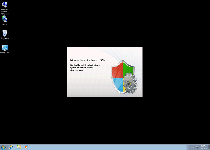
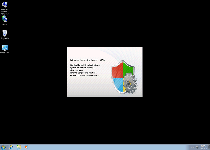


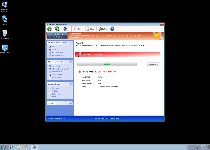


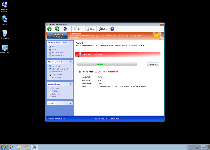

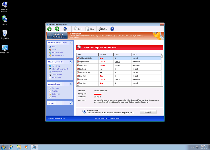


Use SpyHunter to Detect and Remove PC Threats
If you are concerned that malware or PC threats similar to Windows Defending Center may have infected your computer, we recommend you start an in-depth system scan with SpyHunter. SpyHunter is an advanced malware protection and remediation application that offers subscribers a comprehensive method for protecting PCs from malware, in addition to providing one-on-one technical support service.
* See Free Trial offer below. EULA and Privacy/Cookie Policy.
Why can't I open any program including SpyHunter? You may have a malware file running in memory that kills any programs that you try to launch on your PC. Tip: Download SpyHunter from a clean computer, copy it to a USB thumb drive, DVD or CD, then install it on the infected PC and run SpyHunter's malware scanner.
Technical Details
File System Modifications
Tutorials: If you wish to learn how to remove malware components manually, you can read the tutorials on how to find malware, kill unwanted processes, remove malicious DLLs and delete other harmful files. Always be sure to back up your PC before making any changes.
The following files were created in the system:C:\rogueware samples\WintionalityChecker samples\a3c7d30775e61621faec0461f55cfd017d7ec1e77469f9796921ea9901c3b8e1.exe
File name: a3c7d30775e61621faec0461f55cfd017d7ec1e77469f9796921ea9901c3b8e1.exeSize: 1.95 MB (1956352 bytes)
MD5: b109a4e709b8fdf51047796f6b6e2e08
Detection count: 9
File type: Executable File
Mime Type: unknown/exe
Path: C:\rogueware samples\WintionalityChecker samples\a3c7d30775e61621faec0461f55cfd017d7ec1e77469f9796921ea9901c3b8e1.exe
Group: Malware file
Last Updated: May 6, 2024
%AppData%\npswf32.dll
File name: %AppData%\npswf32.dllFile type: Dynamic link library
Mime Type: unknown/dll
Group: Malware file
%AppData%\Inspector-[RANDOM CHARACTERS].exe
File name: %AppData%\Inspector-[RANDOM CHARACTERS].exeFile type: Executable File
Mime Type: unknown/exe
Group: Malware file
%DesktopDir%\Windows Defending Center.lnk
File name: %DesktopDir%\Windows Defending Center.lnkFile type: Shortcut
Mime Type: unknown/lnk
Group: Malware file
%CommonPrograms%\Windows Defending Center.lnk
File name: %CommonPrograms%\Windows Defending Center.lnkFile type: Shortcut
Mime Type: unknown/lnk
Group: Malware file
%AppData%\Protector-[RANDOM 3 CHARACTERS].exe
File name: %AppData%\Protector-[RANDOM 3 CHARACTERS].exeFile type: Executable File
Mime Type: unknown/exe
Group: Malware file
Registry Modifications
HKEY..\..\{CLSID Path}HKEY_LOCAL_MACHINE\SOFTWARE\Microsoft\Windows NT\CurrentVersion\Image File Execution Options\[RANDOM CHARACTERS].exeHKEY..\..\{Value}HKEY_CURRENT_USER\Software\Microsoft\Windows\CurrentVersion\Policies\System "DisableRegistryTools" = 0HKEY_CURRENT_USER\Software\Microsoft\Windows\CurrentVersion\Policies\System "DisableTaskMgr" = 0HKEY_CURRENT_USER\Software\Microsoft\Windows\CurrentVersion\Settings "ID" = 4HKEY_CURRENT_USER\Software\Microsoft\Windows\CurrentVersion\Internet Settings "WarnOnHTTPSToHTTPRedirect" = 0HKEY_CURRENT_USER\Software\Microsoft\Windows\CurrentVersion\Settings "net" = 2012-2-20_1HKEY..\..\..\..{Subkeys}HKEY_CURRENT_USER\Software\Microsoft\Windows\CurrentVersion\Run "Inspector"
Windows Defending System has more files than you list installed on my machine. Need to update your list and detection. Lucky for me I found them and deleted in Safe Mode.